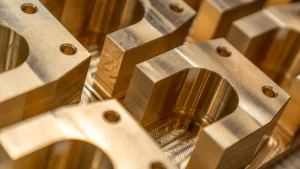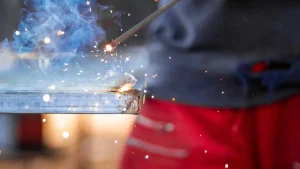炭化タンタル(TaC)コーティングは、グラファイトコンポーネントの耐久性と寿命を大幅に向上させます。その保護層は、摩耗や浸食を防ぎます。この改善は、黒鉛部品の耐用年数の延長が効率の向上とコスト削減につながる産業用途において極めて重要です。選択することにより TaCコーティンググラファイト製部品は、過酷な環境にも耐え、その完全性と性能を長期にわたって維持します。この進歩は、信頼性を高めるだけでなく、頻繁な交換の必要性を最小限に抑えることで、持続可能な活動をサポートします。
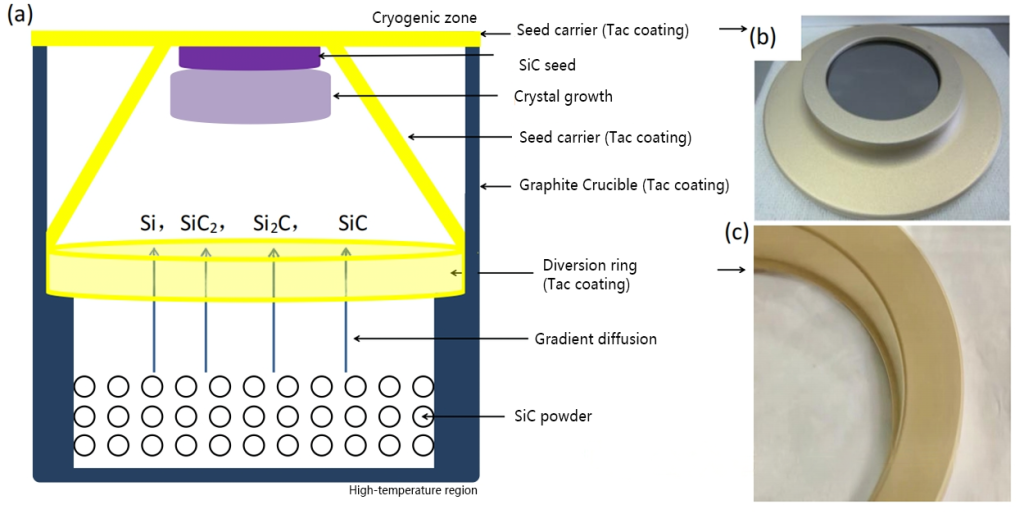
要点
-
- TaCコーティングは、黒鉛部品の耐久性と寿命を大幅に向上させ、産業用途での信頼性を高める。
-
- このコーティングは、摩耗、腐食、極端な温度に対して優れた耐性を発揮し、頻繁な交換の必要性を低減します。
-
- 適用 TaCコーティング 部品の故障によるメンテナンス費用やダウンタイムを最小限に抑えることで、長期的なコスト削減につながる。
-
- の効果を最大化するためには、適切な表面処理と塗布プロセスにおける品質管理が極めて重要である。 TaCコーティング.
-
- 航空宇宙、半導体製造、化学処理などの産業では、このような保護特性の恩恵を受けている。 TaCコーティング.
-
- 投資 TaCコーティング 部品寿命の延長を通じて廃棄物や原材料の消費を削減することで、持続可能な慣行をサポートします。
-
- TaCコーティング技術の今後の動向としては、塗布技術の進歩、再生可能エネルギーや医療機器における新たな用途が挙げられる。
TaCコーティングを理解する
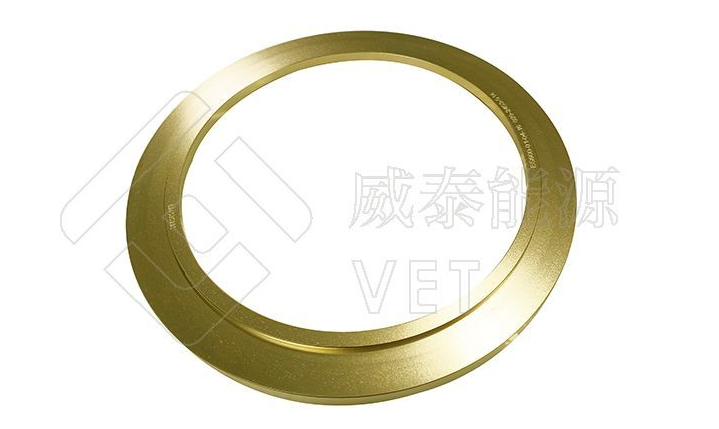
TaCの組成と特性
炭化タンタル(TaC)は、タンタルと炭素によって形成される化合物である。タンタルカーバイドは、タンタルと炭素によって形成される化合物であり、結晶構造を持つため、優れた硬度と強度を持つ。この化合物は融点が高く、極端な温度での用途に適しています。その密度と熱伝導率も、コーティング材としての効果に寄与している。グラファイト部品にTaCコーティングを施すと、過酷な条件に耐える能力が高まります。コーティングはバリアとして機能し、下地の材料を損傷から保護します。
TaCコーティングのユニークな特徴
TaCコーティングには、産業環境においてその価値を高めるいくつかのユニークな特徴があります。第一に、その卓越した硬度は、物理的な摩耗や浸食に対して強固なシールドを提供します。摩耗が一般的な環境でグラファイト部品を使用する場合、このメリットが得られます。第二に、コーティングの熱安定性により、高温下でも部品の完全性が維持されます。この特性は、材料が極度の熱にさらされる航空宇宙産業のような業界では極めて重要です。最後に TaCコーティング化学反応に強く、腐食を防ぎます。選択することで タックコーティンググラファイト製部品の寿命を延ばし、長期間にわたって確実に機能するようにします。
非塗装黒鉛部品が直面する課題
産業環境における摩耗と損傷
産業環境では、グラファイト部品はしばしば大きな磨耗に直面します。このような摩耗は、他の表面との絶え間ない摩擦や接触によって生じます。この摩耗は、他の表面との絶え間ない摩擦や接触によって生じます。時間の経過とともに、これらの相互作用は表面の損傷と材料の損失につながります。保護コーティングを施さなければ、グラファイト・コンポーネントは傷や溝に弱くなります。このような損傷は、その効果を低下させ、寿命を縮めます。コーティングされていないグラファイト部品は、頻繁な交換が必要となり、メンテナンスコストとダウンタイムが増加します。
化学劣化と熱劣化
黒鉛部品は、化学的劣化や熱劣化にも直面します。多くの産業では、これらの部品は過酷な化学物質や極端な温度にさらされます。化学反応は黒鉛を腐食し、その構造を弱めます。高温は熱膨張を引き起こし、亀裂や破壊につながります。これらの条件は、部品の完全性を損ないます。保護がなければ、グラファイト部品は早期に故障する可能性があります。作業効率の低下や潜在的な安全上の危険性が生じます。これらの課題に対処することは、過酷な環境においてグラファイト製部品の信頼性と性能を維持するために極めて重要です。
TaCコーティングがグラファイトの課題に対処する方法
耐摩耗性と耐腐食性の向上
産業環境でグラファイト部品を使用する場合、大きな課題に直面します。摩耗や腐食は、これらの材料をすぐに劣化させます。 タックコーティング は、このような問題に対する耐性を強化することで、解決策を提供する。コーティングは、グラファイトの上に硬い保護層を形成する。この層が研磨力から素材を保護します。表面の損傷や材料の損失が減少することがわかります。コーティングはまた、腐食性物質に対するバリアとしても機能します。黒鉛を弱める化学反応を防ぎます。TaCコーティングを施すことで、部品の寿命が延びます。この改善により、交換の回数が減り、メンテナンス費用が削減されます。
熱安定性の向上
グラファイト部品は極端な温度下で使用されることが多い。保護がなければ、熱劣化の危険性があります。 タックコーティング はこれらの部品の熱安定性を高めます。コーティングは、完全性を失うことなく高温に耐えます。形状や強度を維持した部品が得られます。この安定性は、航空宇宙産業のような産業では極めて重要です。ここでは、材料は激しい熱と圧力にさらされます。TaCコーティングは、グラファイト部品が確実に機能することを保証します。亀裂や破壊のリスクを低減します。この信頼性が、安全で効率的なオペレーションを支えるのです。選択することで タックコーティンググラファイト・コンポーネントの過酷な条件下での性能を向上させます。
TaCコーティングの施工プロセス
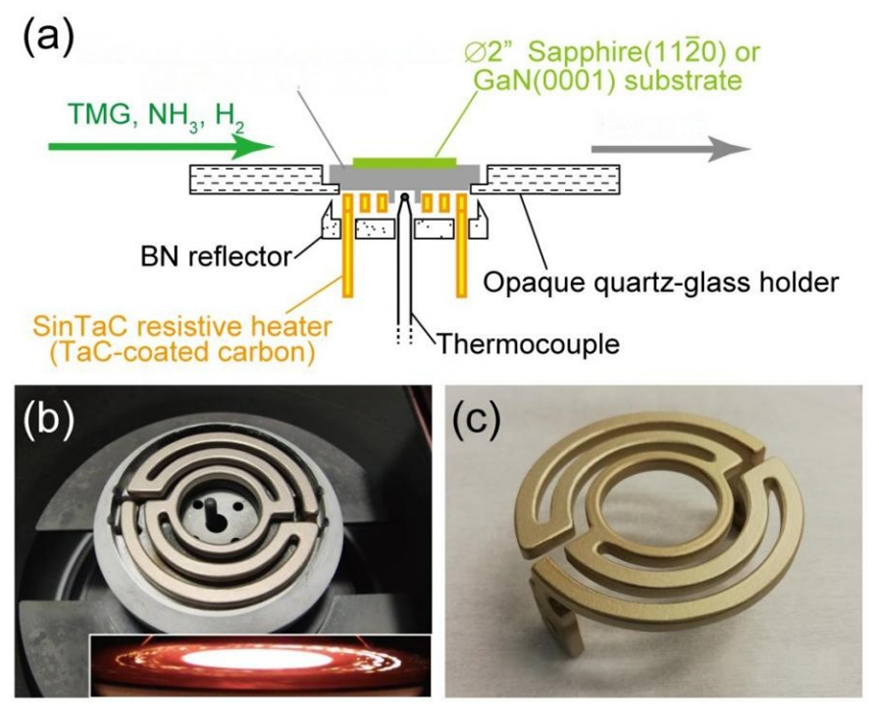
TaCコーティングの技術
グラファイト部品へのTaCコーティングの適用には、いくつかの手法があります。それぞれの方法は、お客様の特定のニーズとアプリケーションの環境に応じて、ユニークな利点を提供します。ここでは、一般的なテクニックをいくつか紹介する:
化学気相成長法(CVD): この技術では、ガス状の前駆物質を化学反応させて、基材上に固形物質を形成します。均一で高品質なコーティングが得られます。CVDは複雑な形状に最適で、優れた密着性を保証します。
物理蒸着(PVD): このプロセスでは、物理的な方法でコーティング材を基材に蒸着させます。PVDでは、薄く耐久性のある層が得られます。コーティングの厚みを正確にコントロールする必要がある用途に適しています。
スパッタリング: この方法では、ターゲットから材料を射出し、基板上に堆積させる。スパッタリングは高い精度と制御性を提供する。緻密で密着性の高いコーティングが得られるため、過酷な条件にさらされる部品に有効です。
溶射: この技術では、コーティング材を溶融状態まで加熱し、基材に吹き付ける。溶射は広い面に有効です。耐久性を高める厚い保護層が得られます。
効果的なコーティングのための考慮事項
TaCコーティングの効果を確実にするためには、施工時にいくつかの要素を考慮する必要がある:
-
-
表面処理: 適切な表面処理が重要です。接着性を高めるために、グラファイトの表面をきれいにし、粗くする必要があります。このステップにより、コーティングの欠陥を防ぎ、強固な接着を実現します。
-
-
-
コーティングの厚さ: TaCコーティングの厚みはその性能に影響する。用途に応じて最適な厚さを決定する必要がある。コーティングを厚くすると保護性能は向上しますが、熱伝導率に影響を与える可能性があります。
-
-
-
アプリケーション環境: コーティングを施す環境は、その品質に影響を与えます。温度、圧力、湿度などの要因をコントロールし、安定した仕上がりを実現しましょう。
-
-
-
品質管理: 厳密な品質管理を行うこと。塗膜の均一性、密着性、欠陥を検査する必要があります。このステップにより、コーティングが望ましい仕様を満たしていることが保証されます。
-
これらのテクニックと留意点を理解することで、効果的に応用することができる。 タックコーティングをグラファイト部品に塗布する。このプロセスにより、耐久性と性能が向上し、要求の厳しい産業用途に適している。
実例とケーススタディ
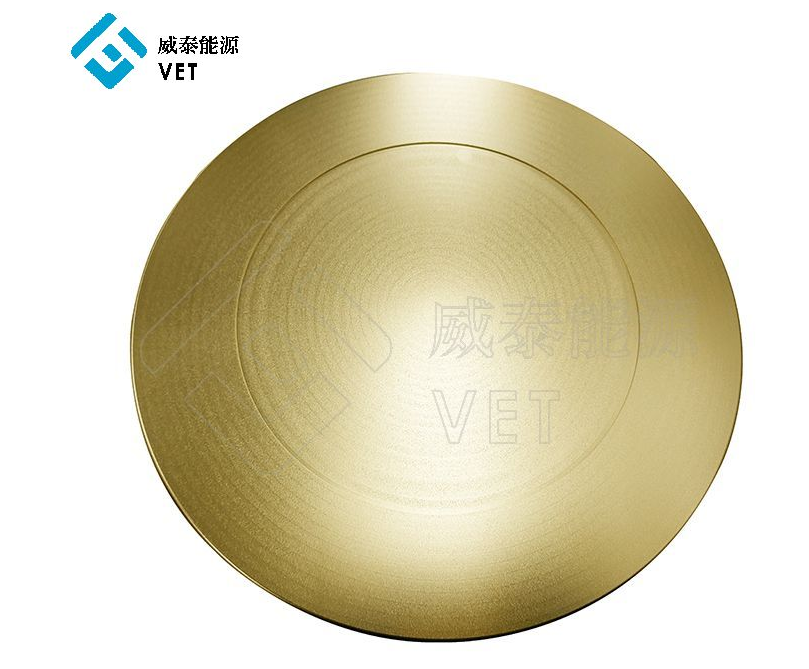
TaCコーティングの恩恵を受ける産業用途
TaCコーティングは、その優れた特性により、様々な産業で使用されている。航空宇宙分野では、航空機に使用される黒鉛部品の性能を向上させます。これらの部品は過酷な条件にさらされますが、TaCコーティングによって信頼性を維持することができます。半導体産業もこのコーティングの恩恵を受けている。製造工程で不可欠なグラファイト・ウェハー・キャリアは、TaCコーティングによって耐用年数が延びる。この改善により、ダウンタイムが短縮され、生産性が向上します。
化学処理産業では、腐食性物質に耐えるTaCコーティングされたグラファイト部品を目にする。この耐性は、材料の劣化を防ぎ、長期的な機能性を保証します。コーティングの熱安定性は、高温用途に理想的です。冶金やガラス製造のような産業では、安定した性能を発揮するためにTaCコーティングされたグラファイトに依存しています。TaCコーティングを選択することで、様々な分野の黒鉛部品の耐久性と効率を高めることができます。
ケーススタディTaCコーティング黒鉛の成功事例
航空宇宙産業の事例を考えてみよう。ある企業が、航空機エンジンのグラファイト部品の頻繁な故障に直面していた。これらの不具合は、高額な修理費用と運用の遅れにつながった。そこで同社は タックコーティング をこれらのコンポーネントに加えた。結果は驚くべきものだった。コーティングされた部品は耐摩耗性が向上し、高温下でも完全性を維持した。この改善により、メンテナンスコストが削減され、エンジンの信頼性が向上した。
もうひとつのサクセス・ストーリーは、半導体業界からもたらされた。あるメーカーは、グラファイト・ウェハー・キャリアの寿命の短さに悩んでいた。この問題を解決するためにTaCコーティングを導入した。コーティングされたキャリアは、優れたエッチング耐性と耐久性を示した。この変更により、交換回数が減り、生産効率が向上した。同社は大幅なコスト削減と製品品質の向上を報告した。
これらの例は、次のような変革のインパクトを強調している。 タックコーティング.このコーティングを施せば、あなたの業界でも同様の成功を収めることができます。部品寿命の延長、メンテナンスの軽減、作業効率の向上などのメリットがあります。
他のコーティング材料との比較
TaCと他の超硬コーティングの比較
グラファイト部品用のコーティング材料を検討する際、炭化タンタル(TaC)は他の炭化物コーティングの中でも際立っている。各炭化物コーティングはユニークな特性を提供しますが、TaCは明確な利点を提供します。
硬度と耐久性:TaCは、他の多くの超硬コーティングを凌ぐ、卓越した硬度を示します。この硬度は優れた耐摩耗性につながり、摩耗の多い環境に最適です。部品が長持ちし、交換頻度が少なくなるという利点があります。
熱安定性:TaCは極端な温度でも完全性を維持します。他の炭化物コーティングが劣化したり効果を失う可能性があるのに対し、TaCは安定したままです。この安定性により、お客様の部品は高温用途でも確実に機能します。
耐薬品性:TaCは化学反応に対して優れた耐性を発揮します。対照的に、炭化物コーティングの中には、腐食環境に効果的に耐えられないものもあります。TaCを選択することで、グラファイト部品を化学的劣化から守ることができます。
汎用性:TaCコーティングは様々な産業用途に適応します。航空宇宙、半導体製造、化学処理など、TaCは多様なニーズに適しています。その汎用性により、他の炭化物コーティングよりも好ましい選択となっています。
TaCコーティングの費用対効果分析
TaCコーティングへの投資には、コストとメリットの両方を評価することが必要です。このバランスを理解することで、十分な情報に基づいた意思決定を行うことができます。
-
-
初期投資:TaCコーティングの施工には、他のコーティングに比べて高い初期投資が必要になる場合があります。このコストは、使用される高度な技術と材料を反映したものです。しかし、この初期投資が長期的なコスト削減につながることも少なくありません。
-
-
-
耐用年数の延長:TaCコーティングは、グラファイト製部品の寿命を大幅に延ばします。交換やメンテナンスの頻度を減らすことができます。この長寿命化は、長期的な運転コストの削減につながります。
-
-
-
経営効率:TaCコーティングされた部品を使用することで、部品の故障による中断が少なくなります。この信頼性により、作業効率が向上します。安定した生産レベルを維持し、コストのかかるダウンタイムを回避できます。
-
-
-
品質とパフォーマンス:TaCコーティングは、部品の品質と性能を向上させます。耐久性と耐性が向上することで、製品の成果が向上します。より高品質な製品を顧客に提供し、満足度と評価を高めます。
-
これらの要素を天秤にかければ、TaCコーティングが大きなメリットをもたらすことがお分かりいただけるでしょう。初期コストは長期的な利点によって相殺され、産業用途のための価値ある投資となります。
TaCコーティングの実用的意義
長期的なコスト削減
グラファイト部品にTaCコーティングを施すと、長期的に大幅なコスト削減が実現します。コーティングは部品の寿命を延ばし、頻繁な交換の必要性を減らします。新しい部品の購入やメンテナンスにかかる人件費も少なくなります。この経費削減は、より効率的な予算配分に貢献します。
さらに、TaCコーティングは操業のダウンタイムを最小限に抑えます。部品の故障が減ることで、生産工程がスムーズに進みます。収益に影響するコストのかかる中断を避けることができます。TaCコーティングされた部品の信頼性は、安定した性能を保証し、安定した生産レベルを維持することを可能にします。
環境および運営上のメリット
TaCコーティングは、環境面および運用面で顕著なメリットをもたらします。黒鉛部品の耐用年数を延ばすことで、持続可能性に貢献します。交換の回数が減るということは、廃棄物が減るということであり、操業による環境への影響を軽減します。原材料の消費を最小限に抑えることで、環境に優しい活動をサポートします。
運転面では、TaCコーティングはプロセスの効率を高めます。コーティングされた部品の耐久性が向上するため、故障が少なくなります。頻繁に中断することなく、最適な生産レベルを維持できます。この信頼性により、全体的な生産性が向上し、一貫して納期を守ることができます。
さらに、TaCコーティングは過酷な環境条件からの保護も提供します。部品が極端な温度や腐食性物質に耐えることを保証します。この回復力により、業務の安全性と有効性が向上し、ビジネス目標の達成に集中できるようになります。
TaCコーティング技術の将来動向
コーティング技術の革新
TaCコーティング技術におけるエキサイティングな進歩を目の当たりにすることでしょう。研究者やエンジニアは、塗布プロセスを向上させる新しい方法を常に探求しています。これらの技術革新は、TaCコーティングの品質と効率の向上を目指しています。
高度な蒸着法:より精密な蒸着技術の開発が期待できます。これらの方法によって、コーティングの厚みと均一性をよりよく制御できるようになります。成膜の改善により、グラファイト部品は最適な保護を受けることができます。
ナノテクノロジーの統合:TaCコーティングへのナノテクノロジーの統合が視野に入ってきた。このアプローチは、分子レベルでコーティングの特性を向上させます。硬度と耐性が向上し、部品の耐久性がさらに高まります。
環境に優しいプロセス:持続可能性が優先されるにつれて、環境に優しいコーティングプロセスへのシフトが見られます。これらの方法は、高品質の結果を維持しながら、環境への影響を低減します。これらの方法を採用することで、より環境に優しい未来に貢献することができます。
オートメーションとロボティクス:コーティング工程における自動化は、今後ますます普及するでしょう。ロボティクスは一貫した塗布を保証し、人的ミスを減らします。より高精度で効率的な作業が実現します。
新産業における新たなアプリケーション
TaCコーティング技術は、新たな産業へと広がりを見せています。従来の用途にとどまらず、様々な分野でその利点が認められていることがお分かりいただけるでしょう。
再生可能エネルギー:再生可能エネルギー分野では、TaCコーティングは過酷な条件にさらされる部品の性能を向上させます。ソーラーパネルや風力タービンの部品が改善され、エネルギー効率が向上しています。
医療機器:医療業界では、生体適合性と耐久性のためにTaCコーティングが研究されています。これらのコーティングは手術器具やインプラントに使用され、長期にわたる性能と安全性を保証しています。
自動車産業:TaCコーティングは、自動車分野で注目を集めています。エンジン部品では耐摩耗性が向上し、排気系では熱安定性が向上しています。これらの進歩は、より信頼性が高く効率的な自動車に貢献しています。
電子・電気通信:エレクトロニクス産業は、その保護特性のためにTaCコーティングを採用しています。高い熱伝導性と耐摩耗性が要求されるデバイスに採用され、長寿命と性能を保証しています。
このようなトレンドについて常に情報を得ることで、TaCコーティング技術の最新動向を活用することができます。これらのイノベーションとアプリケーションは、様々な産業における部品の耐久性と効率の向上を約束します。
TaCコーティングがグラファイト製部品の耐用年数を大幅に向上させることはお分かりいただけたと思います。このコーティングは、摩耗、腐食、極端な温度に対して卓越した耐性を発揮します。TaCコーティングを選択することで、厳しい産業環境においても、信頼性が高く効率的な部品の性能を確保することができます。適切なコーティングを選択することは、操業効率を維持し、コストを削減するために非常に重要です。TaCコーティングは、長期的なメリットを提供し、持続可能な慣行をサポートする価値ある投資として際立っています。グラファイト部品の耐久性と性能を向上させるために、十分な情報に基づいて決断してください。
よくあるご質問
TaCコーティングとは何ですか?
TaCコーティング(炭化タンタルコーティング)は、グラファイト部品に施される保護層です。TaCコーティングは、グラファイト部品の耐久性と寿命を向上させるために使用されます。このコーティングは、耐摩耗性、耐腐食性、極端な温度に対する耐性を提供し、要求の厳しい産業用途に理想的です。
TaCコーティングは黒鉛部品の寿命をどのように向上させるのか?
TaCコーティングは、グラファイト部品の上に硬い保護バリアを形成します。このバリアは、研磨力や腐食性物質からグラファイト部品を保護します。表面の損傷や材料の損失が減少するという利点があります。また、コーティングは熱安定性を高め、高温下でも部品の完全性を維持します。
TaC被覆黒鉛部品が最も恩恵を受ける産業は?
TaCコーティングされた黒鉛部品は、いくつかの産業で役立っている。航空宇宙、半導体製造、化学処理、冶金などである。これらの産業では、過酷な条件に耐える材料が必要とされ、TaCコーティングは必要な保護と耐久性を提供します。
TaCコーティングはどのようにグラファイト部品に施されるのですか?
TaCコーティングは、化学気相成長法(CVD)、物理気相成長法(PVD)、スパッタリング、溶射など、さまざまな手法で施すことができます。それぞれの方法は、お客様の特定のニーズやアプリケーションの環境に応じて、独自の利点を提供します。
TaCコーティングのコストへの影響は?
TaCコーティングは、初期投資は高くつくかもしれませんが、長期的にはコスト削減につながります。コーティングはグラファイト部品の寿命を延ばし、頻繁な交換の必要性を減らします。また、メンテナンスコストの削減や運転効率の向上というメリットもあります。
TaCコーティングと他の超硬コーティングとの比較は?
TaCコーティングは、その卓越した硬度、熱安定性、耐薬品性によって際立っています。他の多くのカーバイドコーティングよりも耐久性に優れています。その汎用性により、様々な産業用途に適しており、優れた保護と性能を提供します。
TaCコーティングは環境の持続可能性に貢献できるか?
はい、TaCコーティングは環境の持続可能性に貢献します。黒鉛部品の寿命を延ばすことで、廃棄物を減らし、原材料の消費を最小限に抑えることができます。これは、環境に優しいオペレーションをサポートし、お客様の活動が環境に与える影響を軽減します。
TaCコーティングの使用に制限はありますか?
TaCコーティングには多くの利点がありますが、初期費用や具体的な施工条件などの要素を考慮する必要があります。コーティングを効果的に行うには、適切な表面処理と品質管理が不可欠です。コーティングが最適な性能を発揮するためには、希望する仕様を満たしていることを確認する必要があります。
TaCコーティング技術に期待される今後の動向は?
成膜方法、ナノテクノロジーの統合、環境に優しいプロセスの進歩が期待できます。これらの技術革新は、TaCコーティングの品質と効率の向上を目指している。再生可能エネルギー、医療機器、自動車産業における新たな用途もまた、TaCコーティングの使用を拡大するだろう。
TaCコーティングが私の用途に適しているかどうかは、どのように判断できますか?
TaCコーティングがお客様の用途に適しているかどうかを判断するには、使用環境、必要な耐久性、予算などの要素を考慮してください。グラファイト部品が直面する特定の課題を評価し、TaCコーティングがこれらの問題にどのように対処できるかを評価する必要があります。この分野の専門家に相談することで、貴重な洞察を得ることもできます。


